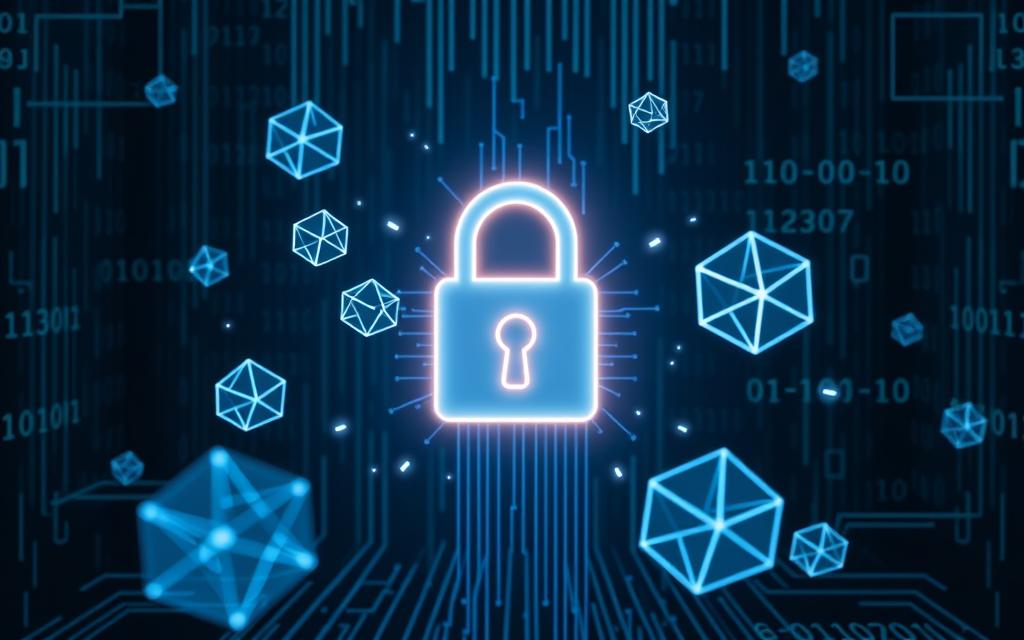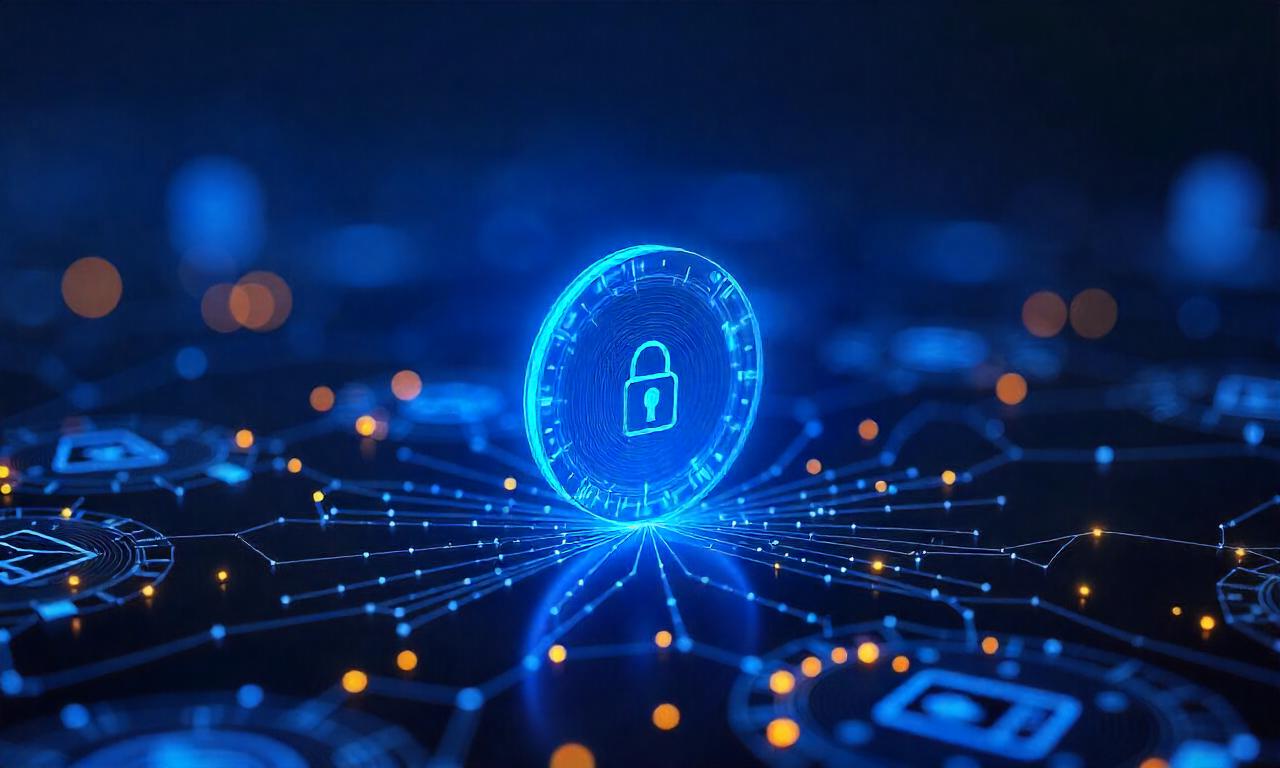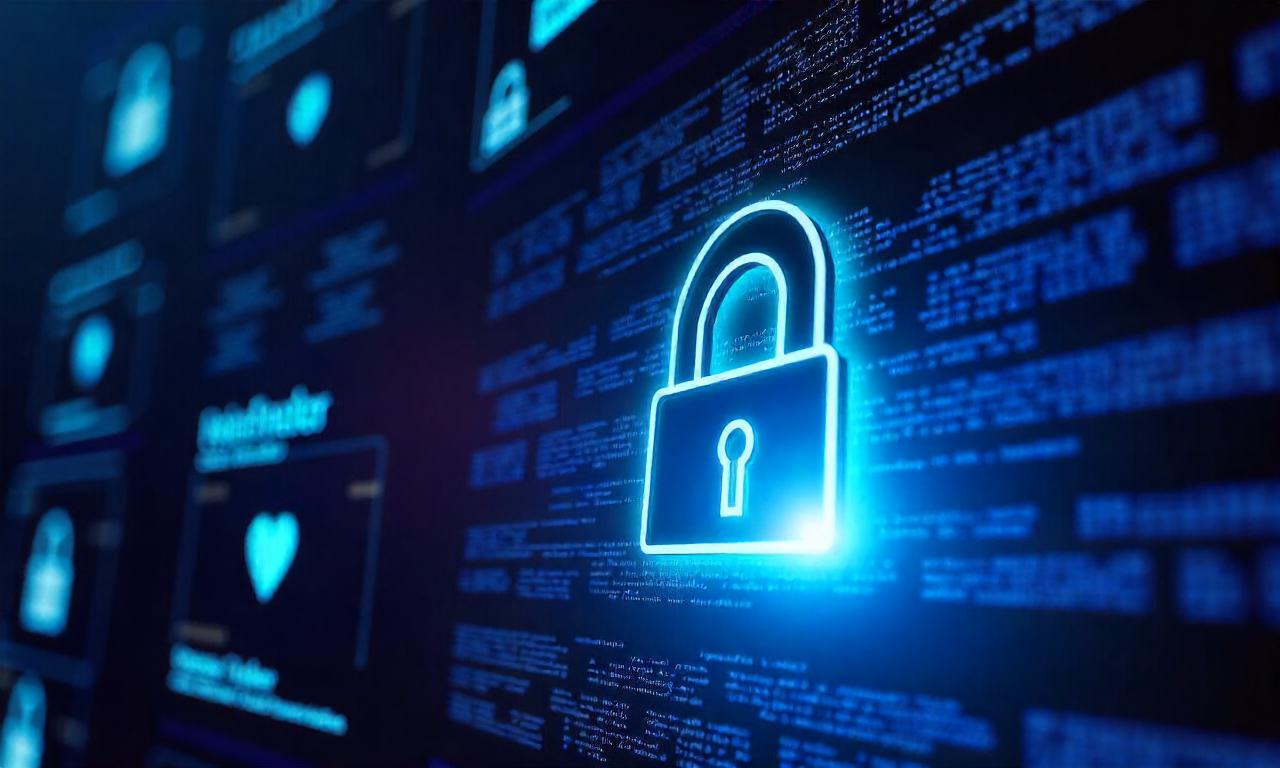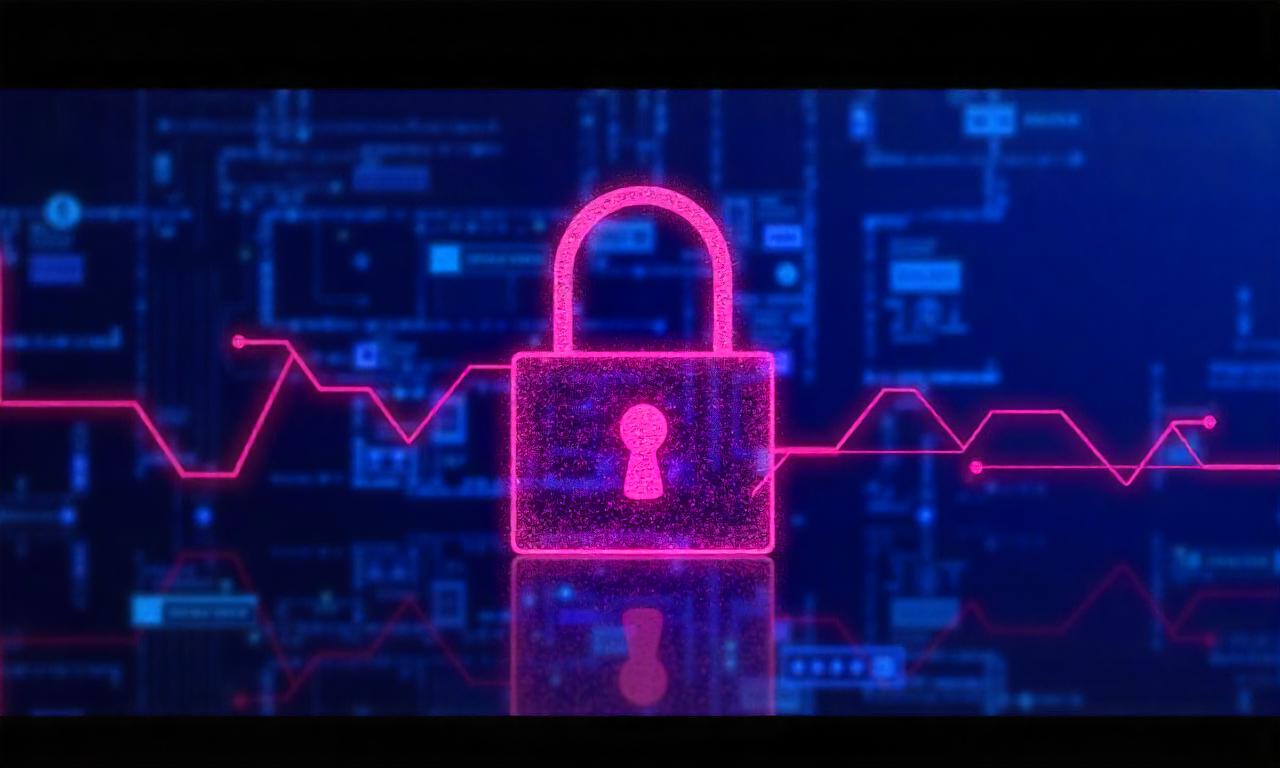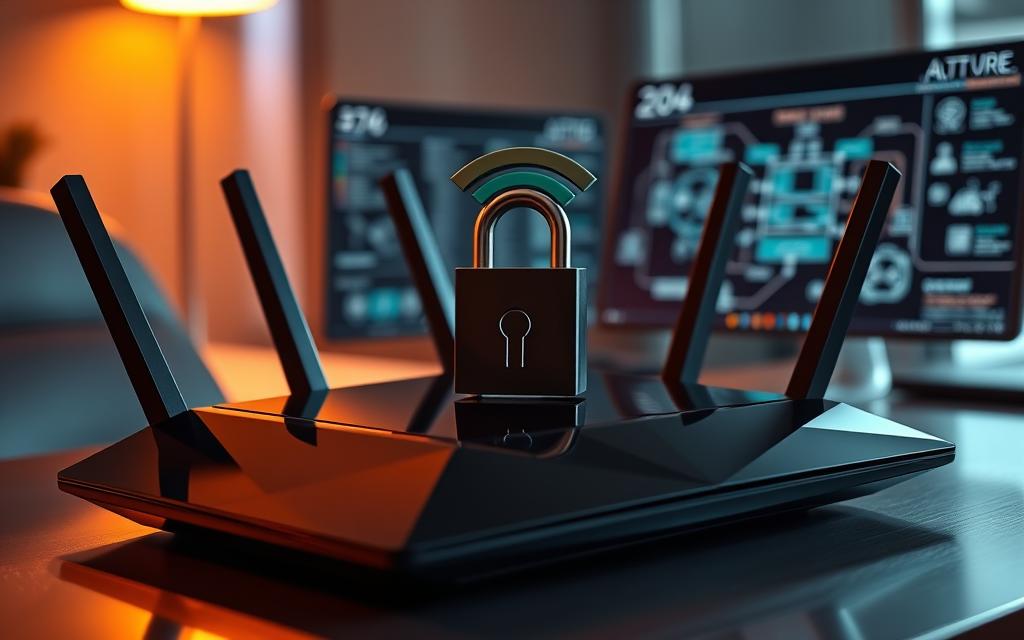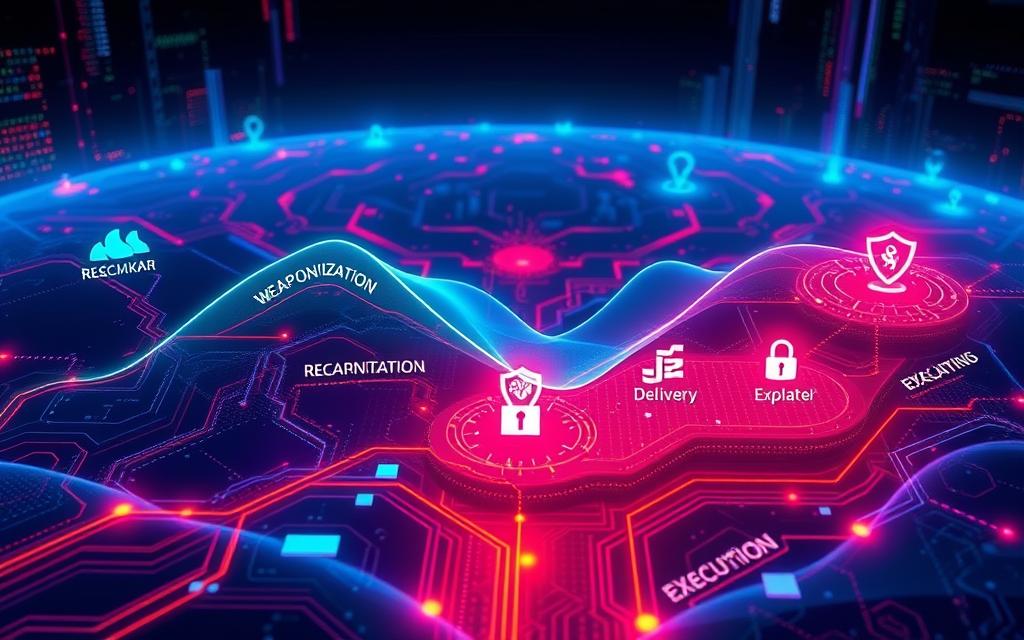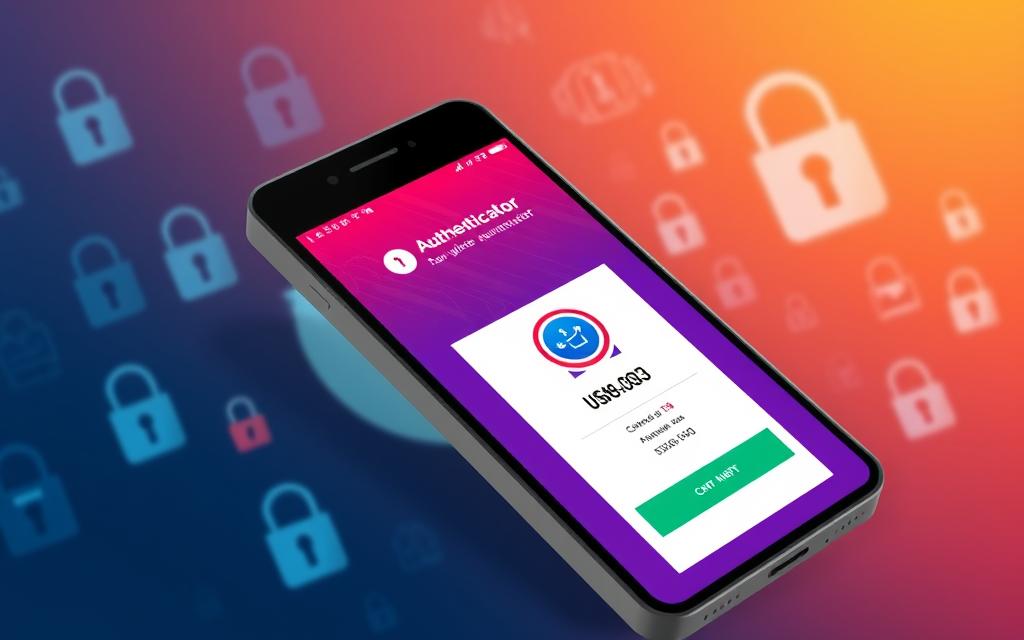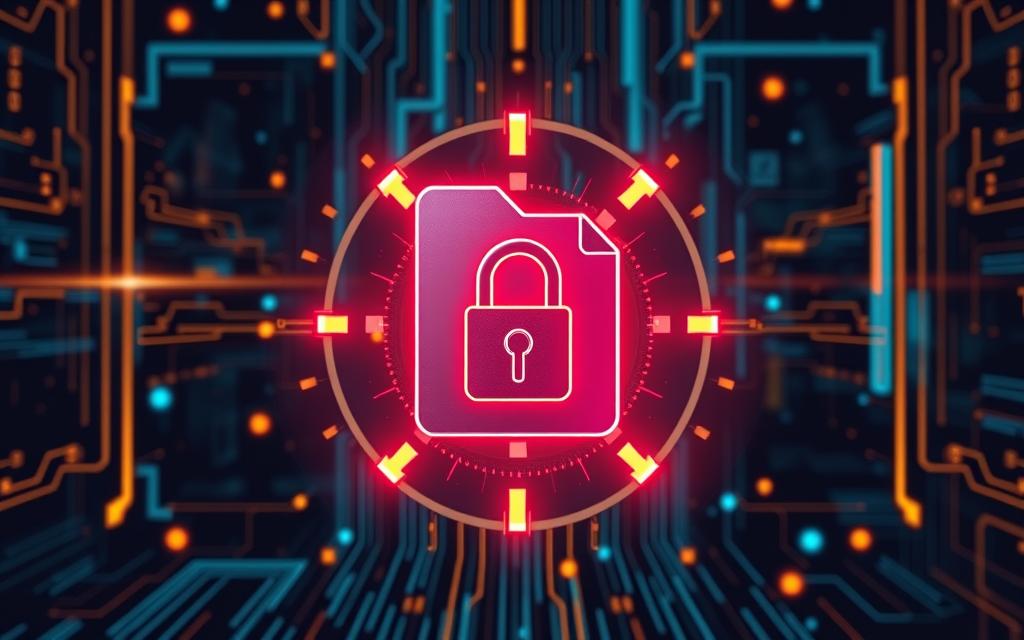Discover the vital role of encryption in cybersecurity, ensuring data protection, secure communication, and defense against cyber threats in the digital age.
Have you ever wondered how your online transactions stay secret? Encryption is a key player in our digital world’s security. But how much do we really know about its role in keeping our data safe?
Encryption is more than just a tool; it’s the foundation of secure online communication. It protects our digital lives from unwanted eyes. Encryption is crucial for keeping our data safe and our online freedom intact.
Every day, lots of information moves online, and encryption keeps it safe. We’ll explore why encryption is essential for keeping our data secure. It’s not just about following security rules; it’s about building trust online.
We’ll dive into how encryption works and why it’s vital for safe online communication. We’ll explore the future of encryption, facing challenges from quantum computing.
Let’s explore the world of encryption together. We’ll learn and strengthen our defenses. It’s about protecting our future online. So, let’s start this journey into cryptography’s role in cybersecurity.
Table of Contents
ToggleUnderstanding Encryption and Its Importance
In today’s world, encryption is more important than ever. It helps keep our personal info safe from cyber threats. Knowing how encryption works is key to protecting our sensitive data.
Defining Encryption: A Primer
Encryption is a powerful tool in cybersecurity. It turns readable data into a secure code. This code can only be unlocked with a special key, keeping data safe from hackers.
Why Encryption is Critical for Protecting Data
Encryption is vital for keeping our personal info safe. Even if a breach happens, encrypted data stays protected. This keeps our privacy safe and helps businesses too.
Encryption also builds trust online. It lets us send messages and make transactions safely. This is because our data is encrypted, making it hard for hackers to access.
As digital security grows, so does the need to understand encryption. Using encryption keeps our data safe and builds trust in technology. It’s a crucial part of any good cybersecurity plan.
Types of Encryption in Cybersecurity Measures
Understanding different encryption types is key to better cybersecurity. Each encryption type has its own role in protecting data. We’ll explore symmetric, asymmetric, and end-to-end encryption to see how they work and why they’re important.
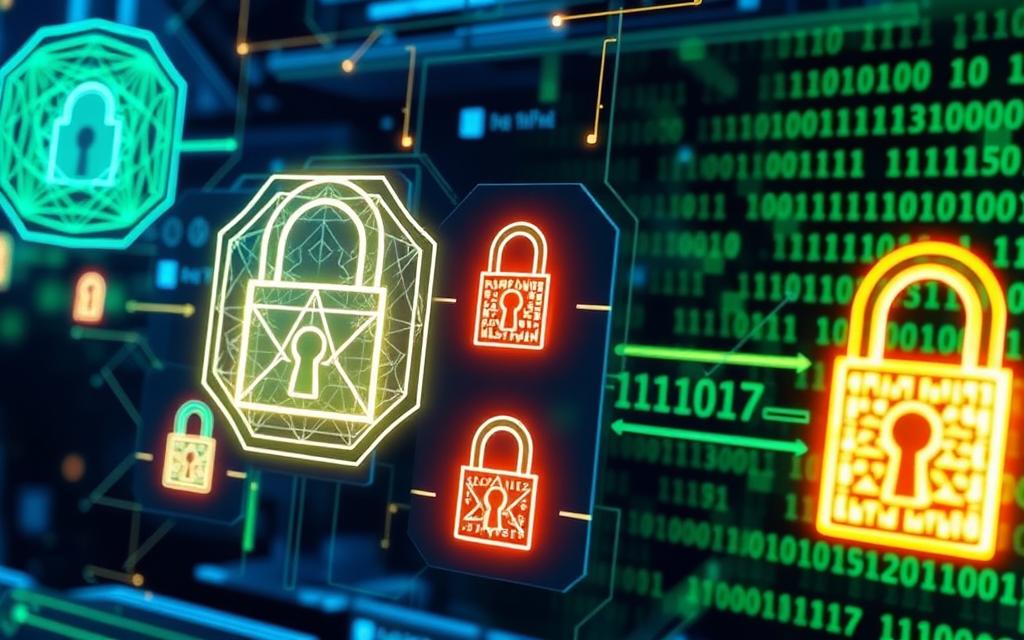
Symmetric encryption uses the same key for both encrypting and decrypting data. It’s fast and good for handling lots of data quickly.
Asymmetric encryption uses two keys: a public one and a private one. It’s vital for secure internet communications, as sending a private key is risky.
End-to-end encryption makes sure only the sender and receiver can read the data. It’s crucial for keeping online messages and emails safe from hackers.
| Encryption Type | Key Usage | Common Uses |
|---|---|---|
| Symmetric Encryption | Single Key | Data encryption on local databases and systems |
| Asymmetric Encryption | Two Keys (Public and Private) | Secure communications over the internet |
| End-to-End Encryption | Keys managed at endpoints | Messaging apps, Email services |
- Symmetric encryption is faster, making it great for internal systems.
- Asymmetric encryption is more secure for data on the internet.
- End-to-end encryption keeps messages safe from prying eyes.
Using these encryption types in our cybersecurity plans makes us stronger against cyber threats. Each type is vital for keeping data safe from hackers and breaches.
How Encryption Shields Against Cyber Threats
Encryption is key in keeping our digital world safe. It acts as a shield against cyber threats, keeps data safe, and makes sharing information secure. Let’s look at how encryption works in real life and how it protects data in different ways.
Encryption in Action: Real-World Scenarios
Encryption is used in many areas to keep data safe. Banks use it to protect their customers’ money, stopping fraud. Hospitals use it to keep patient records private, following strict rules to keep trust.
Encrypting Data at Rest vs. Data in Transit
It’s important to know the difference between encrypting data at rest and in transit. Data at rest is stored on devices, while data in transit is moving over networks. This helps us set up better security for each situation.
| Encryption Type | Usage Scenario | Key Benefits |
|---|---|---|
| Data at Rest | Stored data on hard drives, servers, cloud storage | Mitigates risks of unauthorized access during data breaches |
| Data in Transit | Data moving through networks, such as during emails or online transactions | Protects against interception, ensuring data integrity and confidentiality |
Both types of encryption are vital for strong cybersecurity. They tackle different risks based on where and how data moves.
Encryption Standards and Protocols
Digital landscapes keep changing, and secure communication relies on strong encryption. Today, we look at key technologies like AES, SSL/TLS, and public-key infrastructure. These elements are crucial for safe digital interactions.
The Advanced Encryption Standard (AES) is key in keeping data safe. This algorithm uses a single key for both encrypting and decrypting. This makes it hard for unauthorized access.
Secure Sockets Layer (SSL) and Transport Layer Security (TLS) are also crucial. They work as layers under regular internet traffic. SSL/TLS encrypt data between web servers and clients, keeping it safe and unchanged.
Public-key infrastructure (PKI) helps these protocols by managing digital certificates and keys. PKI links identities to public keys, making secure internet communication possible.
| Technology | Function | Usage |
|---|---|---|
| AES | Symmetric Key Encryption | Encrypting databases, system files |
| SSL/TLS | Protocols for Secure Communication | Secure browsing, email, and data transfers |
| Public-Key Infrastructure | Key Management and Digital Certificates | Ensuring authenticity in digital communications |
AES, SSL/TLS, and public-key infrastructure work together to protect data. They prevent unauthorized access and eavesdropping. These standards and protocols are essential for keeping personal and corporate data safe online.
The Role of Encryption in Cybersecurity
Encryption is key in keeping data safe and meeting legal standards. It protects data from being accessed by unauthorized people. This makes sure sensitive information stays secure.
The Strategic Importance of Encryption in Cybersecurity
Using encryption is vital for any company looking to boost its security. It keeps data safe from threats and shows clients you care about their information. Even if data is stolen, encryption makes it unreadable.
Encryption as a Compliance Requirement
Following the law is crucial for businesses today. Rules like GDPR and HIPAA require protecting personal data with encryption. Companies must use encryption to avoid big fines.
Encryption is essential for a strong cybersecurity plan. It’s not just a choice, but a must in our digital world. It helps prevent data breaches and keeps companies in line with the law.
Challenges and Limitations of Encryption
Encryption is key to keeping our data safe and boosting cyber security. Yet, it comes with its own set of problems. One big worry is unauthorized decryption, which can leak our private info. Also, the issue of encryption backdoors for law enforcement adds more complexity and risk.
To improve cyber security, we must tackle these issues head-on. Let’s look closer at the hurdles encryption faces. We’ll also explore ways for organizations to lessen these risks.

| Challenge | Description | Impact on Cyber Resilience |
|---|---|---|
| Unauthorized Decryption | Potential for attackers to decode encrypted data without authorization. | Risks exposure of sensitive information, undermining the integrity of cyber defenses. |
| Encryption Backdoors | Government or law enforcement agencies demand special access to encrypted communications. | Creates potential vulnerabilities that could be exploited by malicious entities. |
| Key Management | Complexity in managing and storing cryptographic keys securely. | Poor key management can lead to data breaches, reducing cyber resilience. |
Despite these hurdles, we can overcome them. Using strong key management, advanced encryption, and security training can boost cyber resilience.
As we use more digital tools, we must focus on using encryption wisely. We aim to strengthen cyber security against new threats. Understanding these encryption limits is a key part of our journey.
Best Practices for Implementing Encryption
To keep our digital stuff safe, we must follow the best ways to use encryption. This means we need to manage our encryption keys well and stick to strict data security rules.
Key Management and Secure Encryption Practices
Good data security starts with strong encryption key management. This includes making, storing, using, and destroying keys. Each step must meet top security standards to block bad guys. It’s also key to watch who gets to use these keys and when.
Regular Audits and Encryption Policy Updates
Regular encryption checks are key to keeping data safe. These audits spot weak spots in our encryption and show us how to get better. Also, we must keep updating our encryption rules to stay one step ahead of hackers. This keeps our data safe from bad guys.
| Practice | Benefits | Recommended Frequency |
|---|---|---|
| Encryption Key Updates | Prevents key overuse and exposure risks | Annually or after any significant system changes |
| Encryption Audits | Identifies security gaps and non-compliance issues | Bi-annually or as per regulatory requirements |
| Policy Reviews | Ensures policies remain effective against new threats | Annually or following major cyber incidents |
Encryption in the Era of Quantum Computing
Quantum computing is changing how we protect our data. We’re looking into quantum-resistant encryption and post-quantum cryptography. These areas are key to keeping our information safe as quantum computing grows.
Quantum computers can break many encryption methods we use today. That’s why we need quantum-resistant encryption. Post-quantum cryptography is working on new standards that will protect us from both quantum and classical computers.
- Quantum-resistant encryption: Refers to cryptographic algorithms usually thought to be secure against an attack by a quantum computer.
- Post-quantum cryptography: Encompasses all cryptographic systems that are secure against quantum computing attacks, including those not necessarily resistant to all other forms of cryptographic attack.
It’s important to understand these concepts. They show us the need for quick progress in these fields. We’re seeing big efforts to research and develop these technologies, showing we’re ready for quantum threats.
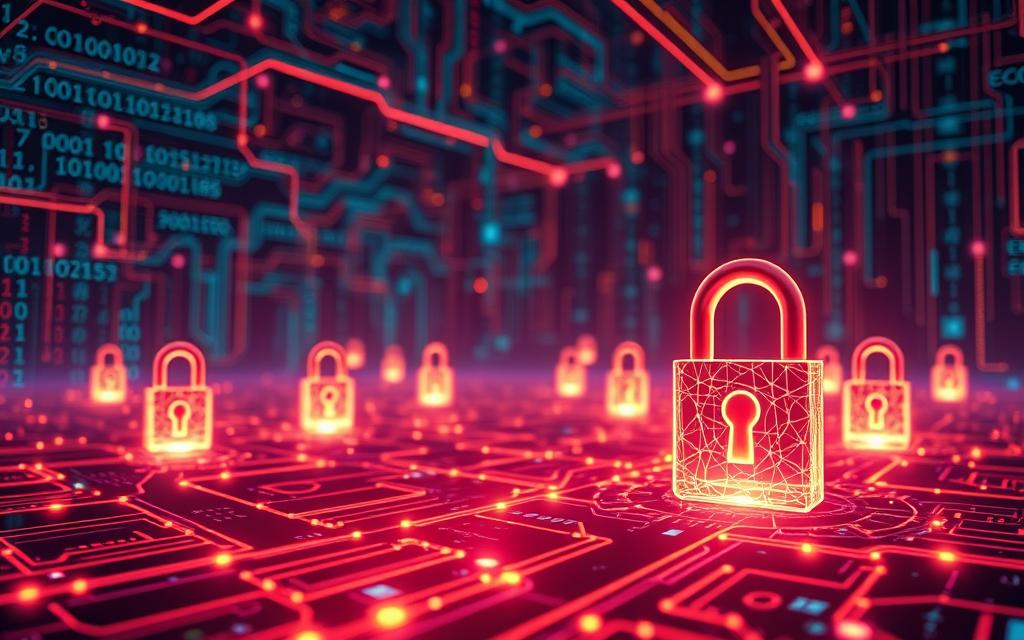
Experts need to keep working on these technologies. This way, we can keep up with quantum computing’s growth. We must ensure our defenses keep up with the changing encryption landscape.
By staying involved in quantum-resistant encryption and post-quantum cryptography, we help build a strong defense. This not only tackles today’s threats but also prepares for tomorrow’s challenges in cybersecurity.
Future Trends and Innovations in Encryption Technology
Technology is changing fast, and so is the need for better encryption. We explore the newest encryption tech and how AI is changing cybersecurity. We look at the latest trends and how they make security stronger and more effective.
Advancements in Cryptographic Algorithms
Cryptographic algorithms are getting better all the time. These improvements make security stronger and data encryption faster. New algorithms are being made to protect us from future threats, even with more powerful computers.
The Impact of AI on Encryption and Cybersecurity
AI is a big help in making cybersecurity better. It can quickly spot patterns and predict attacks. AI helps make encryption stronger and finds weaknesses before hackers do.
The future of encryption and AI in cybersecurity looks bright. We’re seeing big steps forward in keeping our digital world safe. The mix of encryption tech and AI is changing how we protect our data and privacy.
Conclusion
Exploring encryption shows it’s a must for strong cybersecurity. The world of cyber threats keeps changing. This means we need to always protect sensitive information.
We’ve looked at different encryption types, challenges, and new trends. These trends will change how we keep data safe.
Encryption is key in our digital future. It meets strict rules and uses complex methods. Encryption is essential for a complete cybersecurity plan.
It keeps data safe from hackers and helps keep trust with others. Encryption is a strong defense against threats.
Our focus on encryption and security will grow. New technologies will bring both new chances and challenges. We’re on the edge of a new cybersecurity era.
We must stay alert and keep improving our security. Protecting our digital world is a big task. But with hard work and dedication, we can do it.
Ready to strengthen your digital defenses? Visit cybersecarmor.com for expert insights on the role of encryption in cybersecurity and safeguard your information today!

